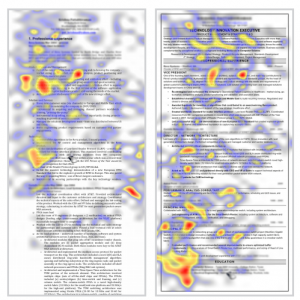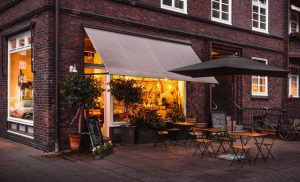
As Facebook continues its pattern of social media world domination, more and more businesses are beginning to realize how important it is to maintain an informative, up-to-date Facebook Page.
Though it’s not quite as useful as your website, Facebook Pages rank highly in search, meaning an increasing number of people are looking to them when it comes to finding information about businesses they’re planning on visiting. As a business owner or social media marketer, it’s in your best interest to keep your Facebook Page in tip-top shape.
This guide will teach you everything you need to know about your Facebook page, including how to optimize its layout and how to approach all of the important elements on it.
Let’s dive in!
Page Templates
Though Facebook Pages aren’t all that customizable, you do have some options as to how you want to organize the different parts on your page.
In the “Settings” menu of your Facebook Page, you’ll see a tab called “Edit Page”. Clicking into this tab allows you to choose and set a Facebook Page layout that fits your business best.

If you’re not sure where to start, check out one of Facebook’s preset templates! Organized by Page type (Standard, Business, Non-profit, etc.), these templates organize content on your Page to best fit your goals. I’d recommend you choose one of the many templates Facebook provides, as they’re built based on data from hundreds of thousands of Pages and businesses like yours.

If you’d like to customize your Facebook Page layout yourself, you can rearrange the tabs on your Facebook Page manually. Rearranging these tabs changes the order of the content on the left-hand side of your page, as well as how content is organized on your “home” page – so think about what aspects of your Page and business you want Page visitors to see most.
For example, if you’ve got yourself an army of loyal customers, you may want to put your Reviews section front-and-center to show potential visitors what others like about your business. If you pour a lot of time into your content strategy, highlighting your Posts might be best for your Page. Think about the goals you have for your Facebook Page and organize accordingly!
Profile image
The first design element we want to think about is our Facebook Page’s profile image. If we think of our Facebook Page as our virtual storefront, our profile image is our store sign. It needs to clearly communicate what our Page – and our business – is about.
What’s important to note about your profile image is that it’s the image that’s going to be most closely associated with your Page across Facebook. If someone searches for your business on Facebook or sees a post of yours that a friend has shared, they’ll see your profile image in the search results and on their timeline.

For this reason, I’d strongly suggest you use your logo as your profile image. It’s something that’s easily recognizable, and helps to establish your branding with people who are seeing your business for the first time.
Choose a high-quality version of your logo to use for your profile image, and use a tool like Photoshop to fit it into a square-shaped image. This ensures your logo will fit cleanly into your profile image section, and that means no awkward crops! Export your image at a size no smaller than 170×170 pixels, or you’ll find it looks pixelated – and that’s not a great first impression.
Check out the profile image from a couple huge brands:

Cover photo
If your profile image is your store sign, your cover photo is your front window display. When looking at your Page, your cover photo is the first, most prominent thing a visitor sees. It’s a banner that spans most of the top of your Page, which makes it prime real estate on your Facebook page layout.
Think of a retail store display – what does it convey? Usually, it’s where businesses inform passersby of promotions or new products. Treat your cover photo the same way, and use it to inform your Page visitors of things like promotional offers, contests, new products, and more.

Let’s look at some design tips for your cover photo.
Sizewise, you want your cover photo to be 851 pixels wide and 315 pixels high (as recommended by Facebook). Simple enough!

In terms of format, if you’re using a photo (as in, a picture taken by a camera) for your cover photo, Facebook recommends you upload it as a JPG file less than 100 kilobytes. If you’re using a simple vector-based image (for example, something including fewer colors, text and/or your logo), a PNG file might work better. Experiment with file types to see what looks best on your page.

As far as content goes, the possibilities are endless! Like I mentioned earlier, I find promoting an offer, contest or new product is the best use of a Page’s cover photo. Include a large image of whatever you’re promoting (such as your newest product offering or the prize for your ongoing contest), as well as some simple copy that highlights what you’re featuring.
Your cover photo is also the thing you should update most frequently. Whenever you have a new promotion, season, or marketing objective change, update that cover photo to reflect it!
Here’s a few examples of some awesome cover photos:


About Page
One of the most important parts of your Facebook Page now is your About page. Though it’s housed in a separate tab from your Page’s default view, Facebook uses the information you input on this page to populate other areas on your Page’s “home” which is a key way to communicate information about your business to new Page visitors.
It’s also essential for Facebook SEO (when and why people find your Page when they search within Facebook).
Long story short? You want to keep your About page updated with the most accurate, up-to-date information possible – this makes your Page a reliable source of information and will help you generate Likes and credibility.
Your About page features several key pieces of information that you should to fill in – these bits of information actually do show up on your Page’s home tab.

- Location: If you have a retail location, you want to make it as easy as possible for potential visitors to find and visit your store. Your About Page features a map with your location and a “Get Directions” button that help visitors find your store. Mobile users will see your location as soon as they visit your page.

- Phone Number: Like your location, having a phone number helps potential customers by giving them an easy way to reach you with any questions they might need. This is especially important for mobile users, who will see a “Call Now” button on top of your profile’s home tab.
- Open hours: Your open hours are also incredibly important. Keeping these updated means people don’t need to second-guess visiting your retail location (or calling your online support). Facebook shows whether or not your store is open right on your page, and uses user data to show what times businesses are busy.

- Other business details: In addition the information listed above, you’re able to add additional information to your Facebook profile’s About Page to help keep customers informed about your business. These details include things like parking, price range, and more miscellaneous information about your business – all of which serve to keep customers informed.

Your About page is arguably the most important part of your Facebook Page’s layout, as it includes all of the information a potential customer might need when deciding to pay your business a visit or go to your website for more information. It’s essential that you keep this portion of your Page up-to-date with as many details as you can, as this will go a long way towards establishing your Page’s – and therefore your business’ – credibility.
Reviews
Though you don’t actually have a lot of say in what this section of your Page contains, your Reviews section is an important one for your business and definitely one that’s worth addressing.
Why? Along with your store location (if you’ve added one) and your open hours, the score given to you by Facebook users shows up right at the top of your page, both on desktop and on mobile. Basically, you want to make sure the score you’ve got on your Facebook Page is as high as possible.

Reviews are so important because they appeal to people through social proof. People feel their choices are validated when others like them have made the same choices. By this principle, seeing that a multitude of past customers have had positive experiences with your business drastically increases the likelihood that a Page visitor will become a customer or visit your store.
Long story short? Keep your customers happy and make sure they tell everyone about it.
Though you can’t force your customers to leave you reviews, you can ask nicely – here’s a couple ways to get them to leave reviews for you:
- Post-purchase emails: If you’re an online business, set up an automated email to send a couple days after a customer’s order has shipped. In this email, you can provide additional information about the product they’ve ordered, and ask for a review.
- In-store materials: Sometimes, all you need to do is ask. Put up a sign with your Facebook Page’s URL and a call-to-action like “Leave us a review on Facebook!”. You can also do the same thing with your receipts or other marketing assets – customers who are particularly satisfied might go out of their way to leave a few kind words.
- Incentivize reviews: One great way to drastically increase the number of reviews you’re collecting is to give customers an incentive to leave them. Offer a discount or coupon in exchange for a review (“Get 20% off your next purchase by leaving a review on our Facebook Page!”).
All this being said, the most important part of your reviews is that they’re good – hundreds of reviews don’t mean squat if you end up with 2 out of 5 stars. The abundance of resources from which potential customers can get information about your business (Facebook, Yelp, etc.) means you should be doing all you can to make your customers’ experiences enjoyable.
Wrapping It Up
By now, you should have a pretty good idea about how to optimize your Facebook Page layout for success.
Just like any other instance of your business on the internet, you want to make sure you make the best possible impression on anyone who visits – and that means keeping your content strategy strong and information up to date.
If you have any questions about your Facebook Page, feel free to chat with me in the comments below!
Digital & Social Articles on Business 2 Community(107)
Report Post





